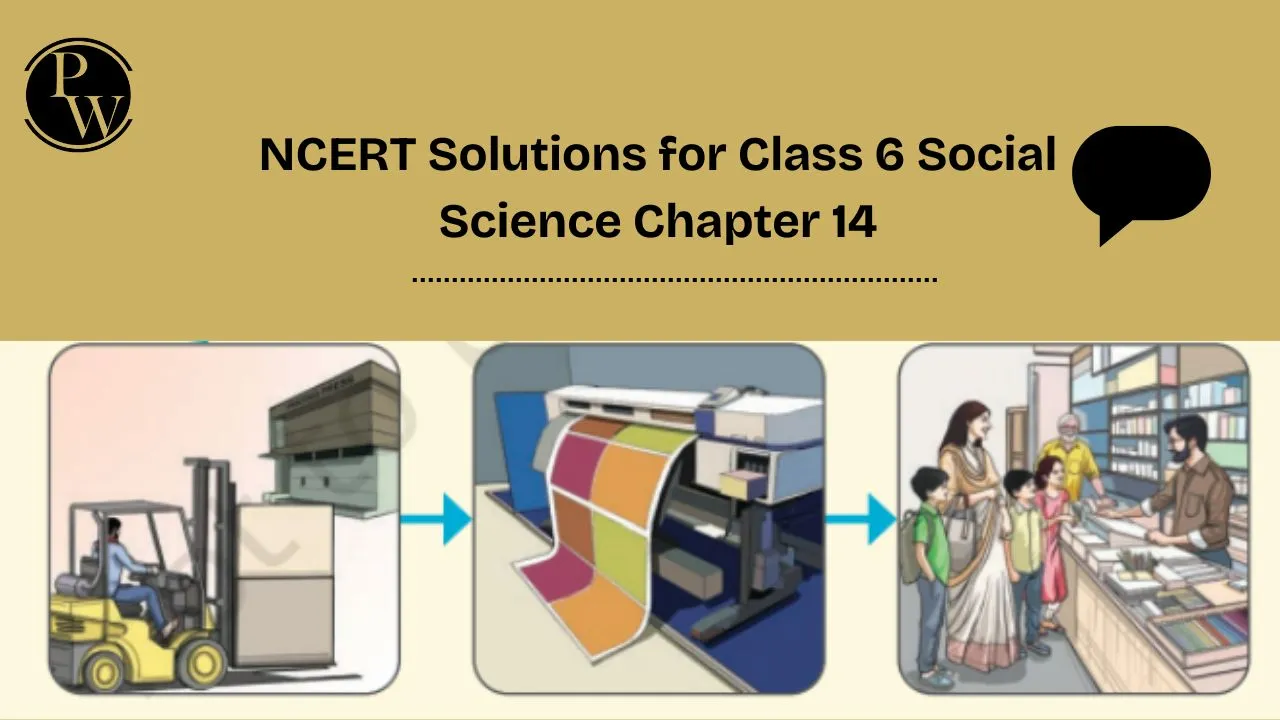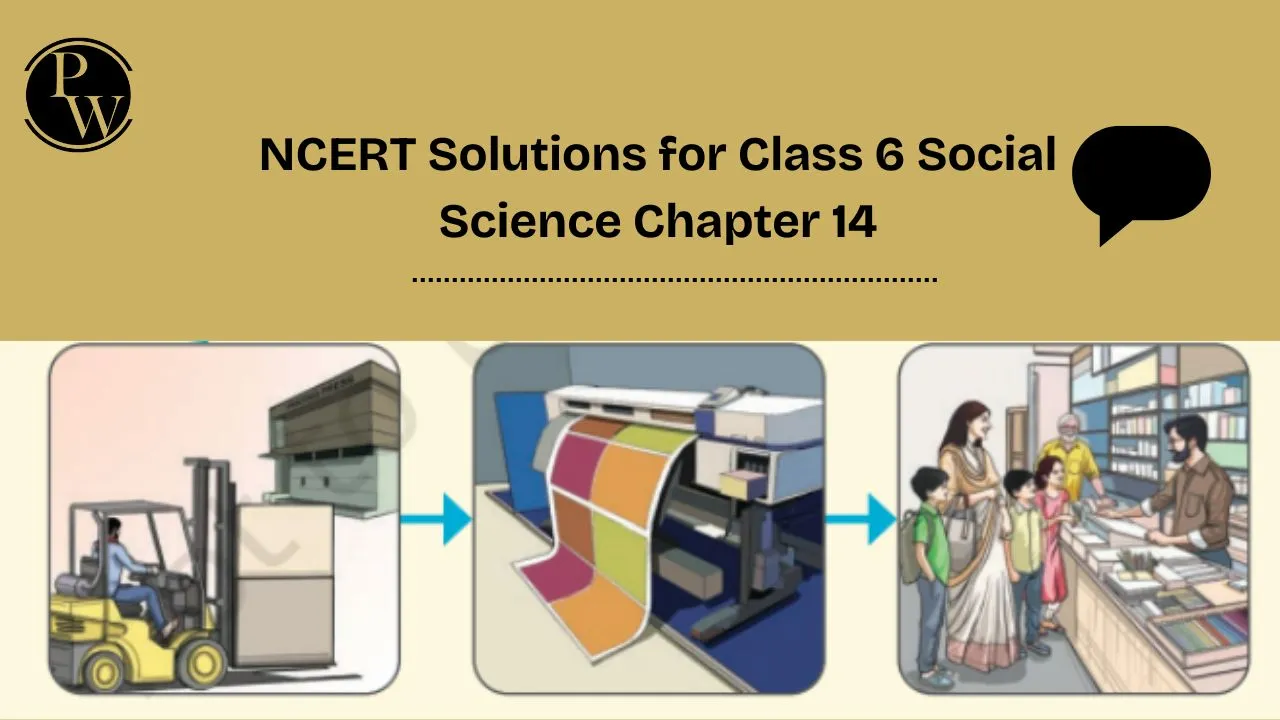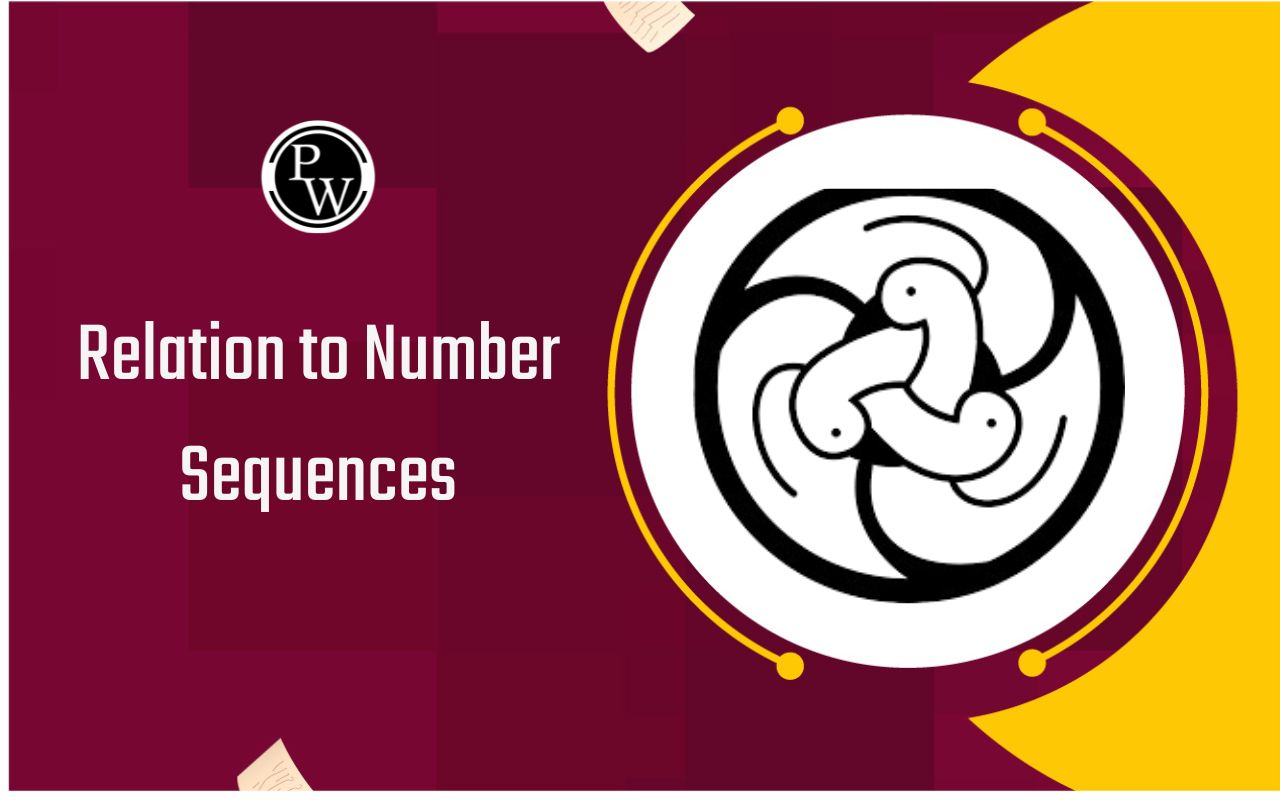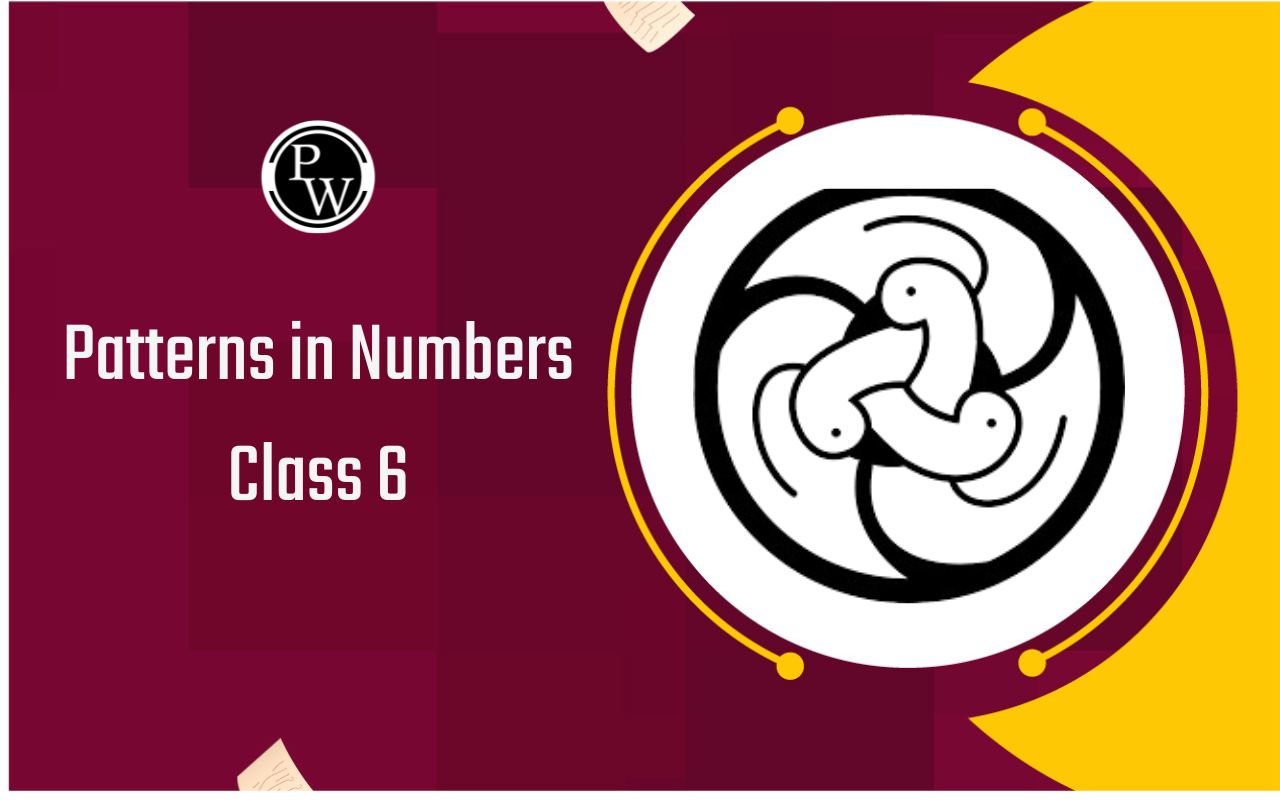

NCERT Solutions for Class 6 Social Science Chapter 14 Economic Activities Around Us provide clear and simple answers to help students understand the different types of economic activities and how they are grouped into sectors.
This chapter explains how people earn their livelihood by working in agriculture, industries, or service-based jobs. The solutions also highlight how the primary, secondary, and tertiary sectors are interconnected and support each other in the economy.
The solutions are based on the latest CBSE Class 6 Social Science syllabus and exam guidelines, making them highly useful for revision, homework, and strengthening the basics of Social Science concepts such as economic activities, livelihood, and the interdependence of sectors.
NCERT Solutions for Class 6 Social Science Chapter 14 Economic Activities Around Us
This chapter introduces students to the different types of economic activities people do to earn a living. It explains how these activities are grouped into three main sectors—primary, secondary, and tertiary—based on the kind of work involved.
Students learn about how people work in agriculture, factories, and service jobs like banking, teaching, or transportation. The chapter also shows how these sectors are connected and depend on each other to keep the economy running. It helps students understand the importance of each type of work in our daily lives and how they all play a role in building a nation’s economy.
Economic Activities Around Us NCERT Class 6th SST Chapter 14 Question Answer
Below are the solutions to all the textbook questions from Chapter 14 Economic Activities Around Us. These answers are designed to help Class 6 students understand the different types of economic activities and how they are classified into sectors like primary, secondary, and tertiary.
THINK ABOUT IT
an you think of any primary activities that you may have seen in the past? What are the natural resources used in these activities? Name two of them and discuss your experiences with your classmates.
Answer:
Yes, I have seen some primary activities in my village and while traveling.
-
Farming:
I have seen farmers growing crops like wheat and rice. The natural resources used in this activity are soil, water, and sunlight. Once, I visited a relative’s farm and saw how the land was ploughed, seeds were sown, and water was supplied through canals. -
Fishing:
During a trip to a coastal town, I saw people fishing in the sea. The main natural resource used in this activity is water (oceans, rivers, lakes). Fishermen used boats and nets to catch fish early in the morning.
LET’S EXPLORE
Now that we have seen some examples of secondary sector activities, can you name two more economic activities in the secondary sector?
Answer:
Yes, here are two more economic activities in the secondary sector:
-
Textile Production:
This involves making clothes and fabrics in factories using cotton, wool, or synthetic materials. -
Furniture Making:
This includes making tables, chairs, and cupboards in workshops or factories using wood and other materials.
THINK ABOUT IT
Observe the different stages of the process shown in Fig. 14.1 on page 206 and discuss them with your fellow classmates.
Answer:
Observation of the Process (Based on Fig. 14.1)
-
Cutting Trees (Primary Sector): A person cuts down a tree using a chainsaw. This is a primary activity because it uses a natural resource—wood.
-
Collecting Logs (Primary Sector): Logs are gathered using machines and piled together.
-
Transporting Logs (Tertiary Sector): The logs are loaded onto trucks and transported to a paper factory.
-
Making Paper (Secondary Sector): In the factory, wood is processed to make paper—a secondary activity as it involves manufacturing.
-
Transporting Paper (Tertiary Sector): Large rolls of paper are packed and sent to another unit.
-
Printing Book (Secondary Sector): The paper is used in a printing press where colorful pages are printed and turned into books.
-
Packaging Books (Tertiary Sector): Printed books are packed and loaded onto delivery vehicles.
-
Selling Books (Tertiary Sector): Finally, the books reach bookstores, where customers buy them.
Conclusion: This picture shows how all three sectors of the economy are interlinked. It begins with nature (primary), goes through production (secondary), and ends with services like transport and sales (tertiary). It helps us understand the journey of a product from raw material to a finished good in our hands.
LET’S EXPLORE
Label the pictures in the illustration shown in Fig. 14.1 on page 206 as: 1. Primary sector 2. Secondary sector 3. Tertiary sector
Answer:
Label the pictures as:
-
Primary Sector
-
Cutting the tree (Image 1)
-
Collecting and stacking logs (Image 2)
-
Tertiary Sector
-
Loading logs onto the truck (Image 3)
-
Transporting logs to the factory (Image 5)
-
Transporting packed paper/books (Image 7)
-
Selling books in the shop (Image 9)
-
Secondary Sector
-
Making paper in the factory (Image 4)
-
Printing books (Image 6)
-
Packaging books using forklift (Image 8)
LET’S EXPLORE
List the economic activities in your neighbourhood and label them appropriately as primary, secondary or tertiary. Draw arrows to show how they are connected to each other. In what ways are they dependent on each other? What would happen if one of the activities ceased to exist?
Answer:
Economic activities in my neighbourhood and their classification:
-
Farming – Primary Sector
-
Dairy Shop (selling milk collected from cows) – Primary Sector
-
Flour Mill (grinding wheat) – Secondary Sector
-
Tailoring Shop (stitching clothes) – Secondary Sector
-
Grocery Store – Tertiary Sector
-
Auto-rickshaw Transport – Tertiary Sector
-
School – Tertiary Sector
-
Mobile Repair Shop – Tertiary Sector
How they are connected (with arrows):
-
Farmers grow wheat → Flour mill processes wheat into flour → Grocery store sells flour
-
Dairy farm supplies milk → Grocery store sells milk
-
Tailor uses cloth from textile industry → Sells stitched clothes to customers
-
Auto-rickshaw helps people travel to shops, schools, markets
Dependence on each other:
All these activities depend on one another. For example:
-
The grocery store needs farmers and dairy suppliers.
-
The flour mill depends on farmers for wheat.
-
Transport services help people reach the shops and schools.
-
Schools need stationers and bookshops to supply books.
What would happen if one activity stopped?
If farming stopped, then:
-
There would be no wheat for the flour mill.
-
Grocery stores wouldn’t have fresh produce.
-
People’s food supply would be affected.
-
Many secondary and tertiary sector jobs would be disturbed.
Questions, activities and projects
1. What is the primary sector? How is it different from the secondary sector? Give two examples.
Answer: The primary sector includes activities that involve the use of natural resources directly to produce goods. It includes activities like farming, fishing, mining, and forestry.
The secondary sector involves the processing or manufacturing of goods using raw materials from the primary sector. It includes factories, industries, and construction work.
Examples:
-
Primary sector: Farming, Fishing
-
Secondary sector: Textile factory, Paper mill
2. How does the secondary sector depend on the tertiary sector? Illustrate with a few examples.
Answer: The secondary sector depends on the tertiary sector for support services such as transport, communication, banking, and marketing.
Examples:
-
A factory needs transport services to bring raw materials and send finished goods to the market.
-
Banking services are needed for business transactions and paying workers.
-
Communication services are used to connect with suppliers and customers.
So, without the tertiary sector, the secondary sector cannot function smoothly.
Question 3. Give an example of interdependence between primary, secondary and tertiary sectors. Show it using a flow diagram.
Answer: The primary, secondary, and tertiary sectors are closely connected and depend on each other in the following ways:
-
Primary Sector: Activities like farming need tools, tractors, seeds, and fertilizers, which are made in the secondary sector.
-
Secondary Sector: Factories use raw materials like cotton or wheat from the primary sector. They also need banking, transport, and communication services from the tertiary sector.
-
Tertiary Sector: This sector supports both the primary and secondary sectors by offering services such as transportation, sales, finance, and marketing.
NCERT Solutions for Class 6 Social Science Chapter 14 – Economic Activities Around Us | PDF Download
Students can download the NCERT Solutions for Class 6 Social Science Chapter 14 Economic Activities Around Us in PDF format from the link provided below.
These solutions are carefully prepared to help students understand the different types of economic activities and how they are classified into various sectors. Each answer is explained in a simple and clear manner to promote better understanding of real-life economic connections.
NCERT Solutions for Class 6 Social Science Chapter 14
Study without using the internet
Benefits of Using NCERT Complete Solutions for Class 6 Social Science Chapter 14
-
All answers are based on the latest NCERT syllabus and are written in easy-to-understand language, helping students learn concepts such as primary, secondary, and tertiary sectors, interdependence between sectors, and how people earn their livelihood.
-
The solutions cover all in-text activities, reflection-based questions, and end-of-chapter assessments, encouraging critical thinking about the world of work and the economy.
-
Students will connect textbook knowledge to everyday life—like farming, shopkeeping, transportation, and services—making learning more practical and relatable.
-
This chapter helps build a basic understanding of how the economy works, how people’s work is interconnected, and why each role in society matters—strengthening social awareness and reasoning skills.
NCERT Solutions for Class 6 Social Science Chapter 14 FAQs
What is Chapter 14 Economic Activities Around Us about?
How do NCERT solutions help in understanding this chapter?
Are these NCERT solutions useful for exams?
What are the three types of economic sectors mentioned in this chapter?
The three sectors are:
-
Primary sector: Activities that involve use of natural resources (e.g., farming, fishing).
-
Secondary sector: Activities that involve manufacturing goods (e.g., factory work, baking).
-
Tertiary sector: Activities that provide services (e.g., teaching, transport).











